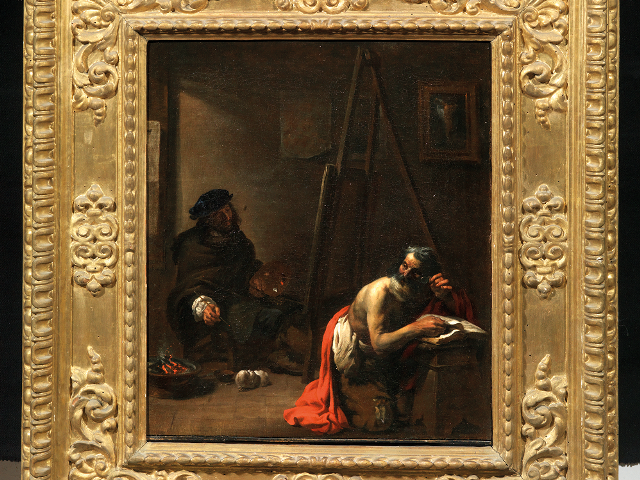In 1673, collector Leopoldo de’ Medici tried to buy Michelangelo Cerquozzi’s studio self-portrait, but in vain. This year, the Uffizi Gallery in Florence succeeded in obtaining the coveted painting, winning it at an auction last Sept. 28 for the sum of 32,500 euros.
The “Cerquozzi in studio,” from the historic collection of the Capponi house in Florence, has thus become part of the Uffizi’s self-portraits and will be among the protagonists of the thematic exhibition “Leopoldo de’ Medici, Prince of Collectors” to be opened in the Pitti Palace on Nov. 6, the day of his 400th birthday. In the future it will have its own space in the new display of self-portraits on the second floor of the Uffizi.
According to Uffizi Galleries Director Eike Schmidt, "The purchase of the self-portrait in Michelangelo Cerquozzi’s studio is an ideal gift for Leopold de’ Medici, one of the most voracious and sophisticated collectors in the history of mankind. At the same time it is a concrete gift for all Florentines and all Italians who have now become its owners. The revolutionary iconography of the painter portraying the living model in the studio reflects the new Roman practice of the early seventeenth century, and anticipates by centuries the flowering of the subject between the nineteenth and twentieth centuries, up to the versions offered by Picasso."
“This is a painting that opens a great space on the vision of the everyday,” adds the Curator of Seventeenth-Century Painting, Maria Matilde Simari, “extremely innovative for the mode of the artist’s self-representation. The painter depicts himself in his working environment, among his models, among his works already created and to be created. Together with Michelangelo Cerquozzi’s self-portrait there is thus the synthesis of the new seventeenth-century view of the world for which artistic representation was, as Filippo Baldinucci wrote, an open window on reality.”
Cerquozzi’s self-portrait presents, as Simari herself writes in the work’s file, a rare and unusual setting: “the painter Michelangelo Cerquozzi did not depict himself according to the most common custom in the foreground or half-figure in a close-up view, but rather in his Roman studio in front of the easel while painting an elderly bare-chested model kneeling in front of him and placed in the foreground of the painting, the latter being in all probability a source of inspiration for the figure of a Saint Jerome considering his chosen attributes.” The work dates to a period roughly between 1640 and 1646. On the back, the canvas has an inscription that reads “di Michelangelo delle Bambocciate,” dating from the late 18th century, and referring to the pictorial genre, the “bambocciate,” with which Cerquozzi is associated: these were Flemish-style views introduced to Rome by Pieter van Laer, known as “il Bamboccio.”
 |
| The Uffizi buys Michelangelo Cerquozzi's self-portrait. |
Warning: the translation into English of the original Italian article was created using automatic tools. We undertake to review all articles, but we do not guarantee the total absence of inaccuracies in the translation due to the program. You can find the original by clicking on the ITA button. If you find any mistake,please contact us.